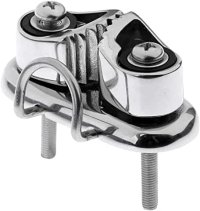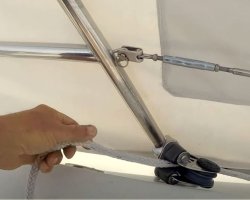Bepi
E27 Roxanne
Has anyone other than me had to use a winch to bring in a headsail?
I was sailing in hurricane gulch off San Pedro in winds that were way stronger than forecast. I had Roxanne dead into the wind and started hauling in the jib but after a few rope burns I wrapped it around the kite winch and bit by bit got it in. It was a hectic couple of minutes I have to say.
I was sailing in hurricane gulch off San Pedro in winds that were way stronger than forecast. I had Roxanne dead into the wind and started hauling in the jib but after a few rope burns I wrapped it around the kite winch and bit by bit got it in. It was a hectic couple of minutes I have to say.



